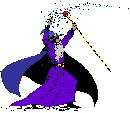Twilight of Consciousness
These pages are from the new book on Astral Projection and dreaming techniques by Robert Zucker, "The Twilight of Consciousness." Download a free sample copy.
 |
Living Inside Your DreamsChapter 4:
|
Everyone dreams.
Each night, we rhythmically drift between a deep, unconscious sleep and a light semi-conscious sleep. This light stage of sleep is where most of our dream experiences take place.
We are physically asleep, but the mind is partially awake. It is awake enough only to be fleetingly aware of the flow of images which dart through our minds.
For every eight hours of sleep, one and a half hours or about 20% is involved in dream episodes. After falling asleep, every nighty minutes we rise from a deep sleep and dream for a few minutes.
We dream five or six separate time during one night of sleep.
The images first appear in short bursts and increase in length and complexity every ninty minutes as the depth of sleep decreases. Dreams may last up to a half an hour during the last phases of the sleep cycle.
As we wax and wane between a deep and light sleep, our bodies go through numerous physiological changes.
Many of these can only be observed by machines which measure and record activity as brain waves, breathing patterns, heart rate, body temperature, muscle responses and eye movements to name a few.
When watching a person sleeping, it is sometimes hard to determine whether dreaming is occuring or not without the use of machinary. To the sharp observer, the sleeping body may twitch, grimmace or mumble during dream episodes.
Science has yet to discover how to record actual dream experiences. They can only measure the body's responses to the experience. The dream still remains a personal and private event.
Scientists Jose Delgado and William Penfield demontrated that our brains store huge amounts of "recorded" information within its cells. When these neurons are somehow stimulated, they react intensely by releasing whatever experiences are imprinted in them. Feelings, memories, visions, frames of music, colors, odors, thoughts, all impressions stored in the mind can be evoked into awareness when the brain is in the right conditions.
External sounds also seem to affect dreams. The part of our brain which alerts us to consciousness is constantly semi-aware of the outside environment and continuously receives any stimuli within its perceiving range. Outside sounds as a dripping water faucet, a thunderstorm, music, conversations, sirens, etc. may be incorporated into the content of the dream without the dreamer realizing it.
Since dreams are associated with a light, trance-like sleep, consciousness is still aroused to any passing impressions.
A police car comes streaming down the street while you happen to be dreaming. You may "hear" the approaching siren, but it may not be enough of a stimulus to arouse you into fully waking up. Instead, the siren becomes a part of the dream.
You may start to dream of yourself being chased by the police or someone you fear. Some people may not even react to the siren at all. There are as many varieties of responses as there are individuals who associate different experiences to how they feel or act to the outside noise.
A sleeping mother may awaken immediately upon hearing her crying baby, but sleep soundly without a stir during a rain storm. A sleeping father may dream of the mother attending the baby or some type of dream he may associate with the baby's sound. We seem to set our own standards to what stimuli we will respond and how we will respond to it.
Next: Chapter 5: Twilight: projection into the Astral
2006 Entertainment Magazine On Line. All rights reserved.
Contents cannot be copied, reproduced or distributed without permission from the author.
This original content is property of Robert Zucker
Astral Projection Book Recommendations
These are among some of the books in my library, now available through Amazon.com. When you click on any link or image, follow through for more books in related topics.
Art and Practice of Astral Projection
by Ophiel One of the most popular, and easy to follow, instruction books on using the dream state to induce a dream consciousness state of astral projection. |
|
by S.L. MacGregor Mathers and Others. Edited and Introduced by Francis King . Additional Material by R.A. Gilbert |
|
Author: Stephen Laberge Amazon Book Description: "[A] solid how-to book...For amateur dream researchers, this is a must." WHOLE EARTH REVIEW This book goes far beyond the confines of pop dream psychology, establishing a scientifically researched framework for using lucid dreaming--that is, consciously influencing the outcome of your dreams. Based on Dr. Stephen LaBerge's extensive laboratory work at Stanford University mapping mind/body relationships during the dream state, as well as the teachings of Tibetan dream yogis and the work of other scientists, including German psycholgist Paul Tholey, this practical workbook will show you how to use your dreams to: Solve problems; Gain greater confidence; improve creativity, and more. Ballantine Books (November 13, 1991 |
|
|
More Books on Astral Projection |
More Books on Lucid Dreaming |